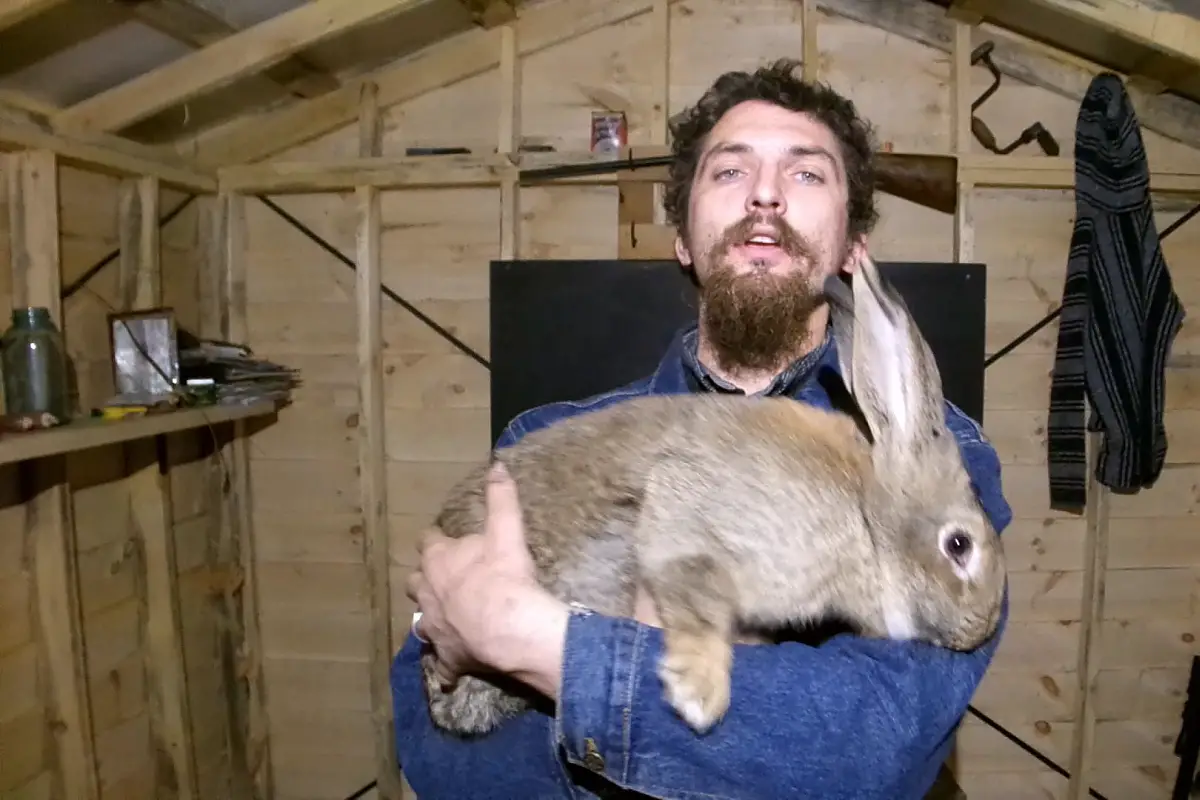My wife and I raise a herd of rabbits to provide meat for the family. We hardly ever buy pellets, but it sure was a learning experience. First off, we need to understand what rabbits need to eat to be healthy.
What Rabbits Need to Eat
A rabbit’s diet should contain the following:
- 15-25% fiber from whole plant matter
- 14-18% protein, mostly from green plant matter
- 1-3% fat from plant matter and added seeds
- 0.5% calcium from plant matter and mineral supplements
Starting with that, you can start to get an idea of what a proper diet looks like for rabbits. For example, here is the ingredient list for a bag of 15% protein rabbit feed sold in my area.
- Alfalfa
- Wheat middlings
- Dried distiller’s grain
- Corn
- Soy
- minerals
The issue I have with that is it’s very low in vitamins. Often, Rabbit feed is low or completely void of most vitamins. The best way to get the needed vitamins is through fresh greens of one sort or another. That’s one of the great benefits of growing your own feed ingredients. They are far more nutritious.
What vegetation do you have growing outside? It’s almost a certainty that most of what’s in your yard is good for rabbits. Green growing plants, tree leaves, and most fruits and vegetables can be used in rabbit feed.
Leafy greens are good fiber and often have decent protein. Grains are good sources of additional energy through starch and oil, and sometimes have a lot of protein to add. Vegetables and root crops can be both a source of fiber and starch, and some have extra sugar. Fruits like apples and pears are high in fiber and have a decent amount of energy through sugar.
All these things, and many more, can be mixed together to formulate the best rabbit feed for your unique situation. We can always use a combination of things you grow, wild things you gather, and things you can buy locally.
So, let’s talk about specific ingredients, ingredient types, and how to use them.
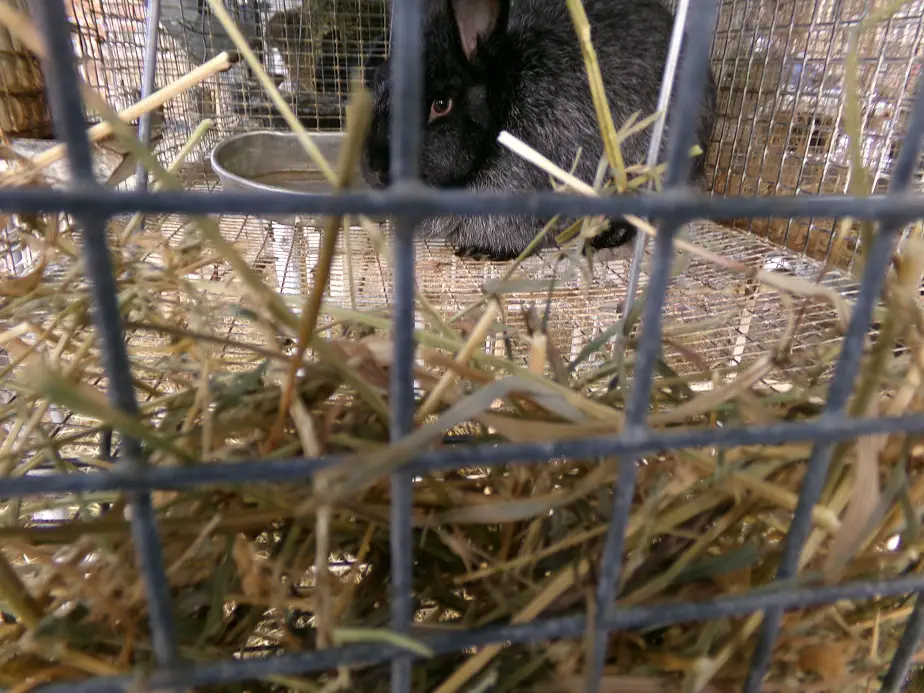
How much Fiber do Rabbits Need?
Rabbits need about 80 percent of their diet to be high-fiber plant matter. That’s almost any leafy or stemy green plant. For example, Alfalfa is usually around 28% fiber by dry weight and Timothy grass is about 32%. When formulating feed for rabbits, keep that in mind.
Rabbits that are growing, pregnant, or nursing all need additional energy than what they can get from just hay or grass. Sometimes non-production rabbits do too. The most common way to get that is by adding grains for extra starchy energy.
The best type of fiber comes from green, whole plants or plant parts like grass, beet tops, or tree leaves. Processed leftovers like pea hulls and wheat chaff are sometimes used, but it’s not as good because it’s usually low in or devoid of most nutrients.
Fiber can come from other sources, but the bulk of it should probably be from green plant material because that also contains all needed minerals and vitanmins. I grow potatoes, sugar beet, and mangel beet for my rabbits. Although potato is a starch ingredient, it’s still about 30 percent fiber by dry weight.
That’s quite an interesting thing. Potatoes have the potential to be the main starch ingredient in rabbit feed, and they won’t water down the overall fiber content. In areas like mine where potatoes are a preferred crop to grow regionally, it could be an option to consider.
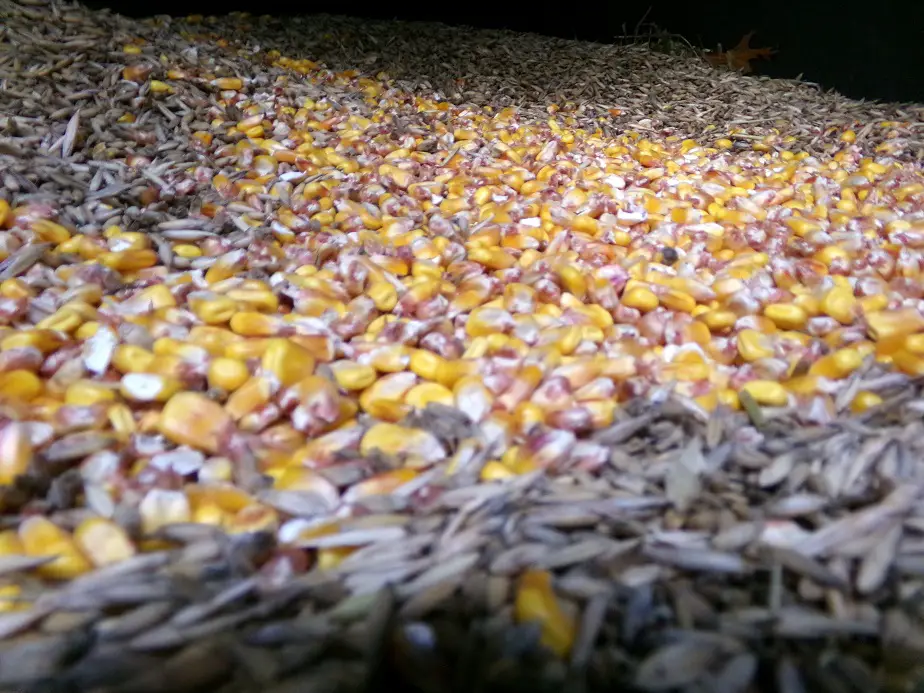
How Much Grain Do Rabbits Need?
Rabbit feed usually contains between 15 and 30 percent grain or grain products. A good place to start is an inclusion rate of 20 percent. At 20 percent, most grains will provide enough additional energy to promote proper health and growth in rabbits.
A common starting point for adding grains into a rabbit diet is about 20% of the total diet, by weight. So, if your rabbits are currently eating 8 ounces of pellets a day and you want to switch to a pellet-freed diet, that would be 1.6 ounces grain and 6.4 ounces of hay of some sort.
Instead of grain, let’s just say starch. High-starch feed ingredients can include things like:
- Corn
- Oats
- Sunflower seeds
- Wheat
- Milo
- Sorghum
- Potato
- Jerusalem artichoke
Personally, I use oats, corn, potato, and jerusalem artichoke. We grow all but the oats. Any of these can be considered more or less equal to each other. If you are feeding roots like jerusalem artichoke, consider their dry weight to be equal to grains.
These things are all called concentrates. It would be an energy concentrate. Technically, the vegetables have to be somewhat dry to be called a concentrate.
One pound of fresh tubers would equal approximately 3 ounces of grain. That’s why it can be hard to feed enough fresh vegetation to provide all the energy they need. That’s why I’m investing in a solar dehydrator, a commercial grinder and a pellet mill in the spring. We’re going to dry, pulverize, and make pellets from a lot of our fresh feed ingredients.
High-energy fruit and vegetables can be given to boost a diet, but when they’re fresh they’re still 80 or 85 percent water. Dry, they are about equal to grains.
What I’m saying is, the energy concentrates need to be pretty dry for a production animal to get enough energy. That’s why grains are so popular, they’re dry when harvested. But, it’s limiting because there are many other options out there besides just grains, some quite better too.
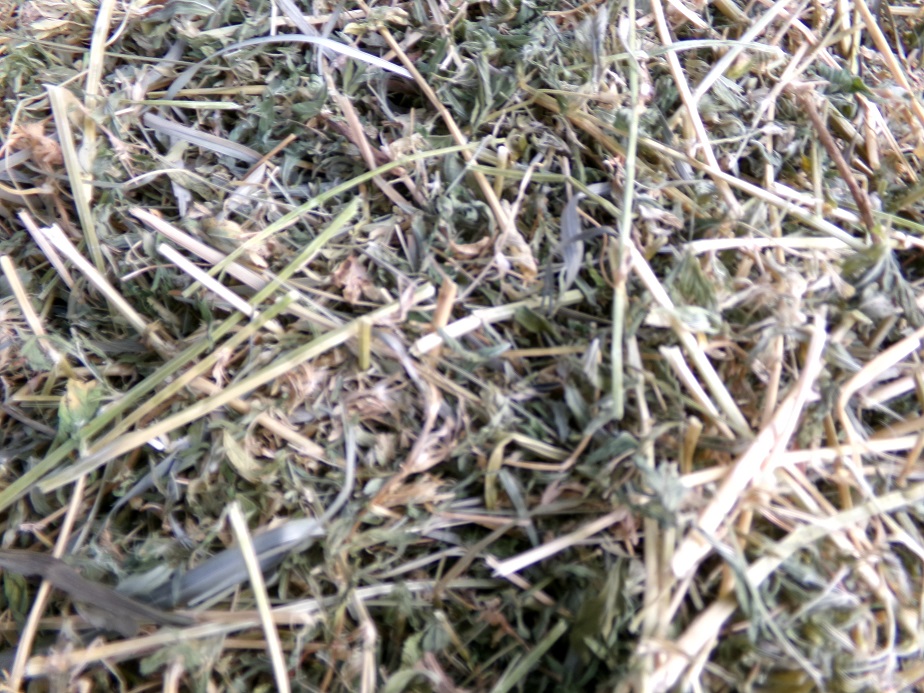
Hay vs Fresh Greens
Rabbits tend to grow slower on just fresh greens because it’s a water-filled feed. Dried hay takes up about 60 percent less space so they can eat more and get more energy from it. Fast-growing meat breeds always grow better on a high-hay diet than on only fresh greens.
Fresh greens are about 80 percent water. Hay has around 10 or 15 percent water in it. The difference in total volume between fresh and dried plant matter is something an animal nutritionist has to take into account.
Although fresh greens support better health, dried greens mean more green plant calories eaten per day. The best would arguably be a mix of both, but I’ll often settle in favor of the mostly or all-fresh greens. That’s because they’re healthier and because if I’m harvesting the greens myself, the extra step of drying them out can be more work than I can handle at the time.
It’s something you have to judge for yourself. I can get more growth is I dry the greens first, and
Now in the winter, like right now, I feed a lot of hay. We don’t store up hay, I buy it from my neighbor. It’s a pretty nice alfalfa hay. It has more calories and protein than a grass hay, so it’s better for production animals and in cold weather.
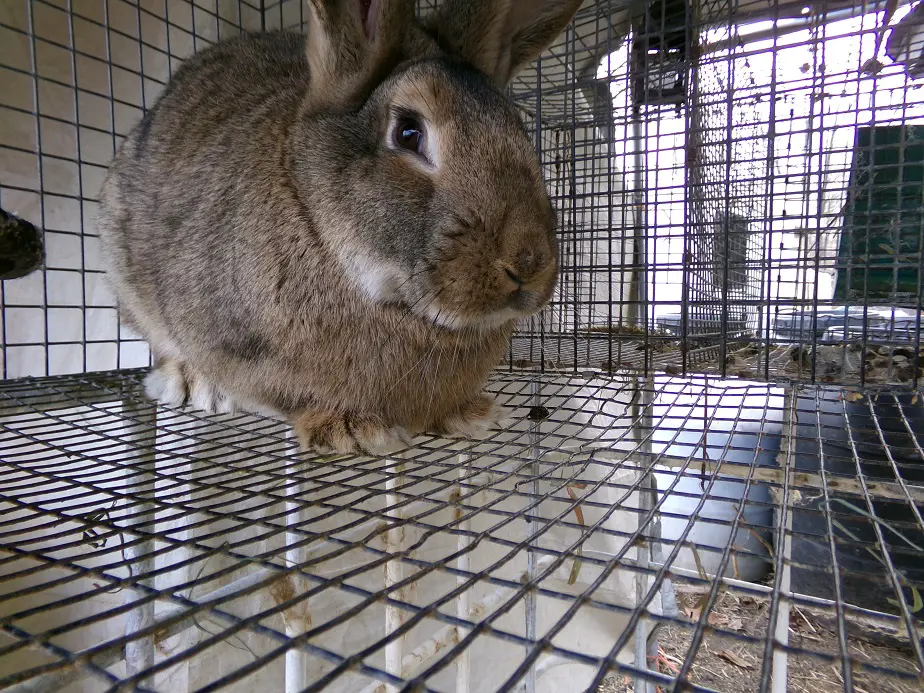
How Much To Feed Your Rabbits
Rabbits usually need about 5 percent of their body weight worth of dry feed daily for maintenance. For adult meat breeds, that’s about half a pound a day. During pregnancy and nursing, an increased or more concentrated diet is needed.
The best way to alter a rabbit’s diet is by changing it’s energy concentration, not the amount of dry matter intake. If I have a rabbit that needs to slim down, going with more hay and less corn/sunflower seed will help that happen quickly, and it will support better overall rabbit health than just reducing their intake by half.
I know the old common adage is to feed rabbits a half-ration if they get fat. it works, but then they also get half the minerals, half the vitamins, and half the fiber. Rabbits should keep fiber in their gut as much as possible to keep the gut microbiome healthy and to prevent digestion complications.
The proper practice is to reduce the energy concentrates, or completely remove them for a while in order to get your rabbits back to a healthy weight. No rabbit will get fat on just greens or hay, even the higher-energy alfalfa hay. At least I’ve never seen it.
On the other side of the coin, you add more concentrates or change the ratio of concentrates to a diet if your animals need more energy. Unlike with fibrous plant matter, with energy concentrates, we can just add a little more to the diet and it’s usually going to make a noticeable difference.
I can usually just add a tablespoon of additional grains when one of my rabbits needs a bit more calories in their diet. Remember, a rabbit can only fit so much in its belly every day. There’s usually enough room for the extra grains, and that makes a solid difference in their daily diet.
That’s fairly common for my breeding does. They often need more calories, especially when they have a larger litter.
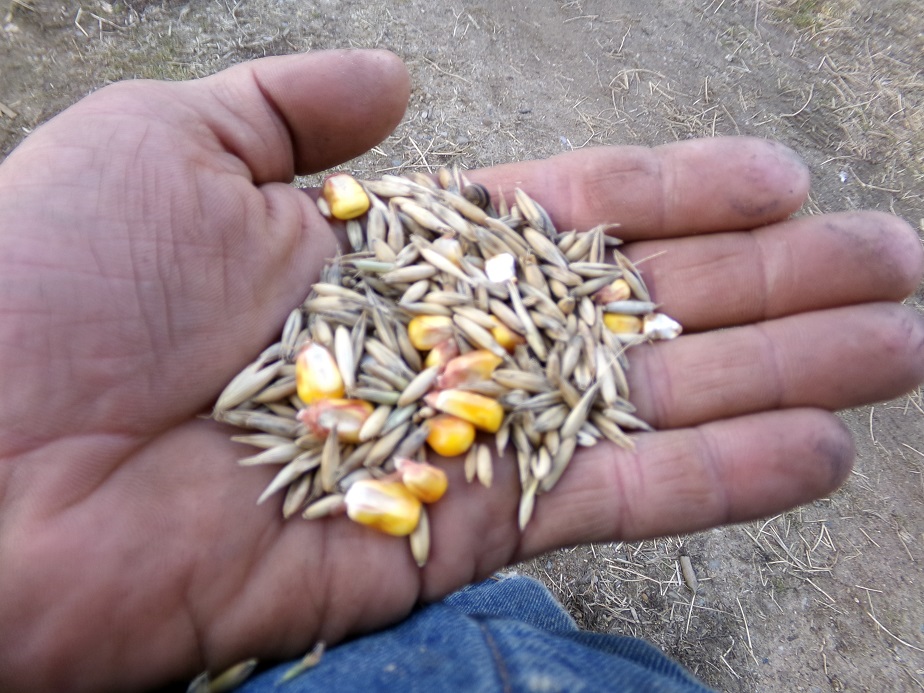
Making Sure Rabbits Get Enough Energy from Feed
How do you know if your rabbits are getting enough feed? First off, they will be skinny. If your rabbit’s backbone is noticeably sticking out, or it feels very much protruding, they need to get more calories in their daily diet.
A well-fed rabbit has a backbone that you can feel just a bit when stroking the animal’s back with your fingertips. If you can’t feel the backbone, your rabbit is too well-fed and needs a diet. Generally, That comes from feeding too many treats or too much grain.
Rabbit feed generally has about 1,000 calories per pound. A production diet (growing, pregnant, or nursing) usually has 200-300 additional calories per pound. So, once you have a baseline established, adding 20-30 percent more calories (about 2-3 ounces of grain) you can bring a maintenance diet up to a basic production diet.
If your adult female rabbit is eating a total of 8 ounces of feed per day for approximately 500-ish calories and you decide to breed her and rear a litter, you should probably add 1 to 1-1/2 ounces of grains daily to provide the additional 20-30 percent caloric intake daily.
For a pure maintenance diet, 90 percent green stuff with 10 percent grains (by weight) should be a fine option. For a production diet, 20 to 30 percent is often a grain or grain-based material. I like to start at 20 percent and adjust from there.
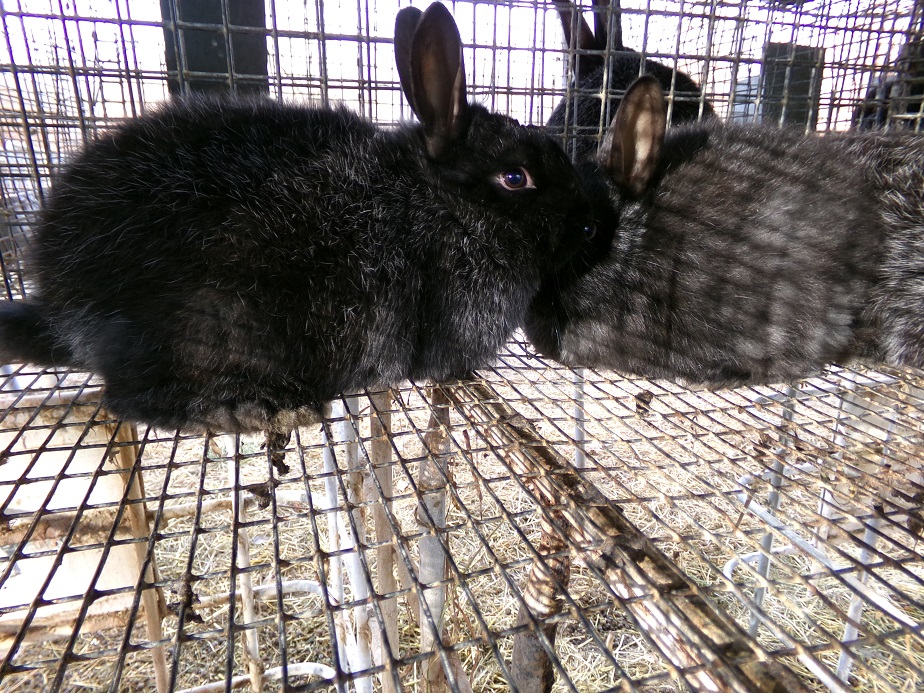
Making Sure Rabbits Get Enough Protein from Feed
Rabbits need 10 amino acids and approximately 15 percent protein at a minimum to be healthy. A high-quality hay will provide all the needed protein and amino acids, but sometimes soy, beans, peas, or lentils are used to add additional protein for pregnant or nursing does.
If rabbits aren’t getting enough protein they will appear hungry and will not grow very well. On a 12 percent protein diet, young rabbits will grow at half-pace of a 16 percent protein diet. Generally speaking, 18 percent protein is the highest a rabbit can benefit from. More than that and it just gets flushed through the urinary system.
If you are feeding a lower protein type of grass, you should add something else that’s quite high in protein. Generally, soy is used because it’s the highest protein plant we have. You’ll have to look up the specific protein content of the ingredients you want to use and determine how much to incorporate.
Feedipedia.org is the place to do that.
Rabbits actually need twice as much protein as they ingest from normal feed. Their gut is able to convert a lot of the fiber they eat into a source of protein through hindgut fermentation. As long as they have good gut health, rabbits can produce half of the amino acids they need in their own gut.
If their gut health is off, they don’t convert fiber to all the right amino acids as much and they can be a bit malnourished. That’s why I concentrate so much on gut-health. That’s also why I’m working on producing my own gut-health supplements for rabbits.
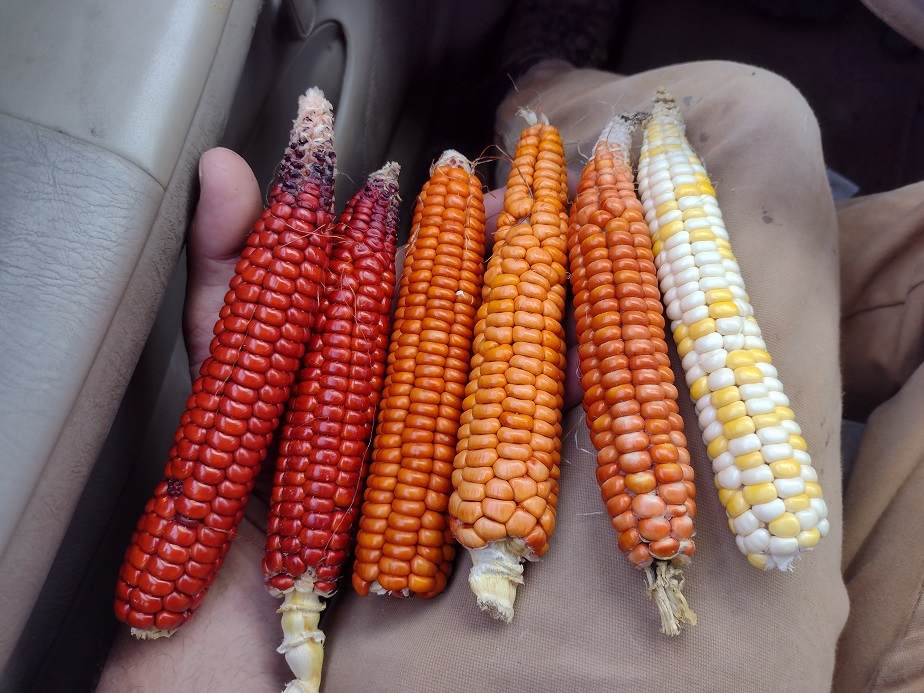
Best Grains for Rabbit Feed
The best grains for rabbits are oats, sunflower seed, and corn. Oats are higher in protein and fiber, blending well with other feed ingredients. Sunflower seed is high in fiber, starch, and oil. it also has good amounts of lysine to support good rabbit growth. Corn is a great energy source and is inexpensive.
I feed oats and corn as our primary rabbit grains. Personally, I just use a whole oat or shelled corn, measured out into the feeders. I like tik be a little careful with corn because it’s slightly more likely than other grains to cause an over-acidification of the gut. Although, all grains are prone to that.
Basically, don’t over-use any grains. conditions like colic, bloat, and diarrhea are more common on a high-grain diet. I prefer to stick to a lower grain diet, even though the animals grow faster on a higher grain diet.
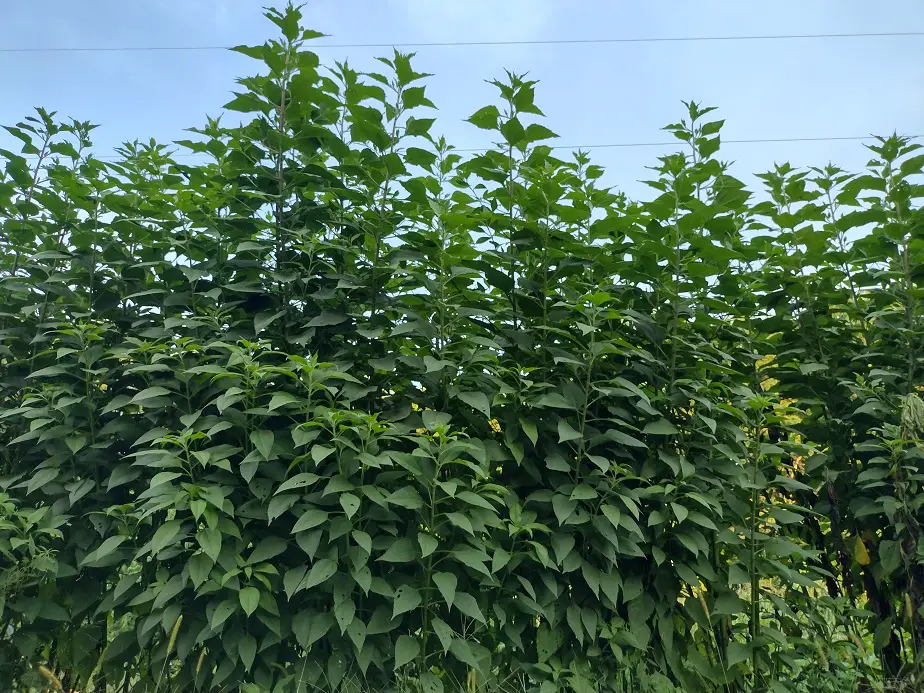
Best Greens to Grow for Rabbit Feed
The best greens to grow for rabbits are:
- Alfalfa
- Russian comfrey
- Dock
- Chickory
- White mulberry (for leaves)
- Red or white clover
- Sunflower
These are the best you can grow in North America and they are very hard to beat anywhere in the world. They are all high in protein, vitamins, minerals, and digestible energy for a green plant. Grass works, but it’s lower energy and you will need to supplement it with additional protein and energy concentrates for production animals. Even non-production rabbits tend to go thin on a diet of just grass.

